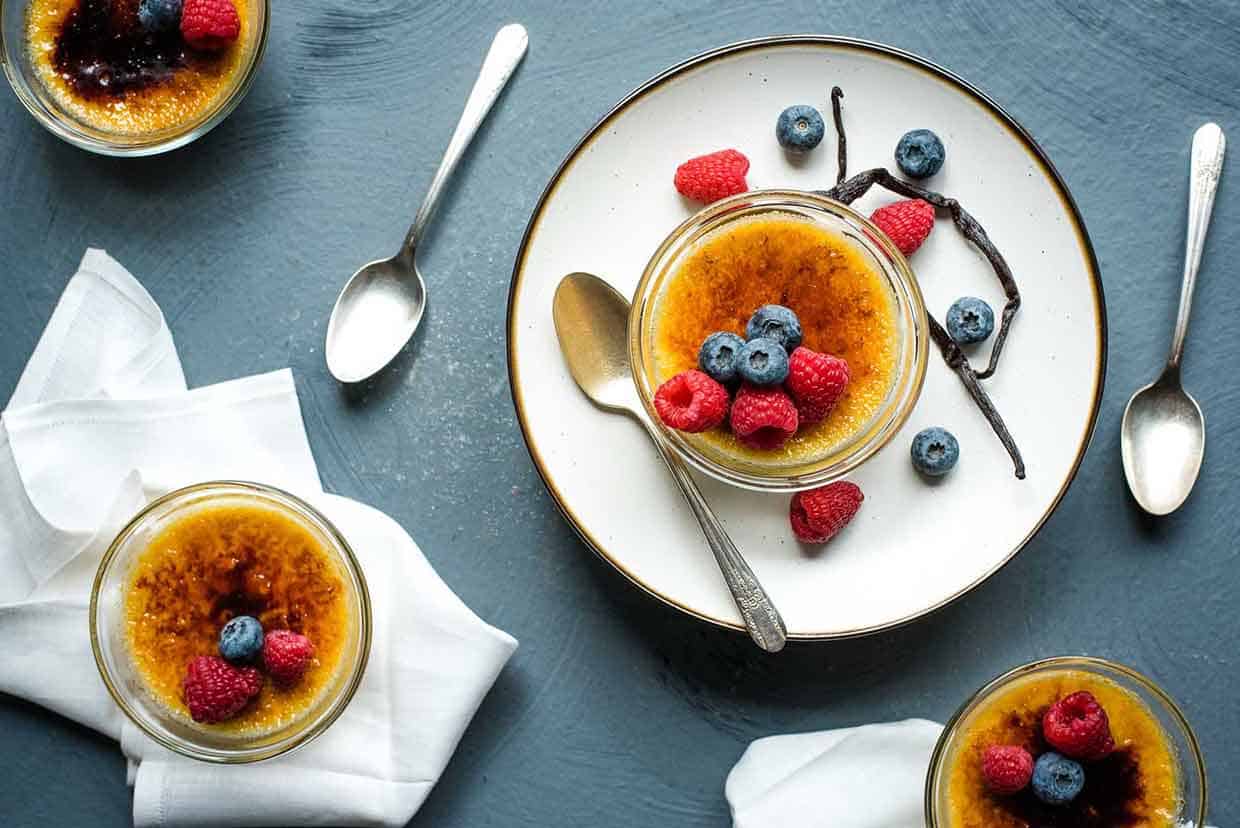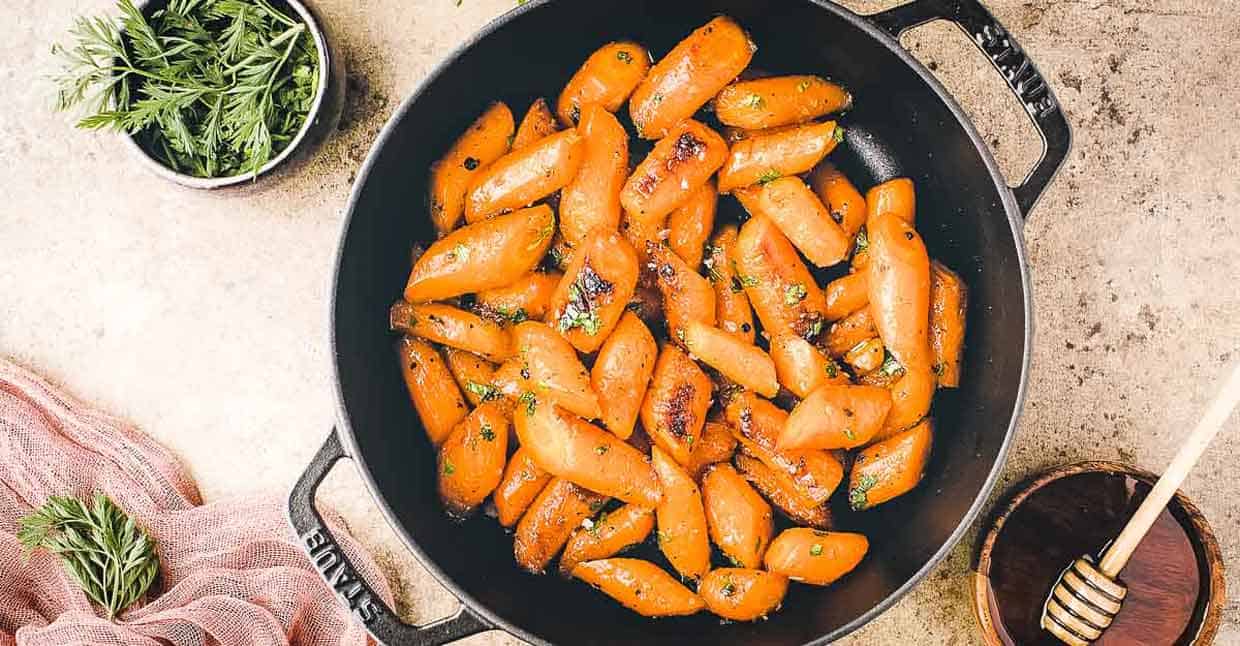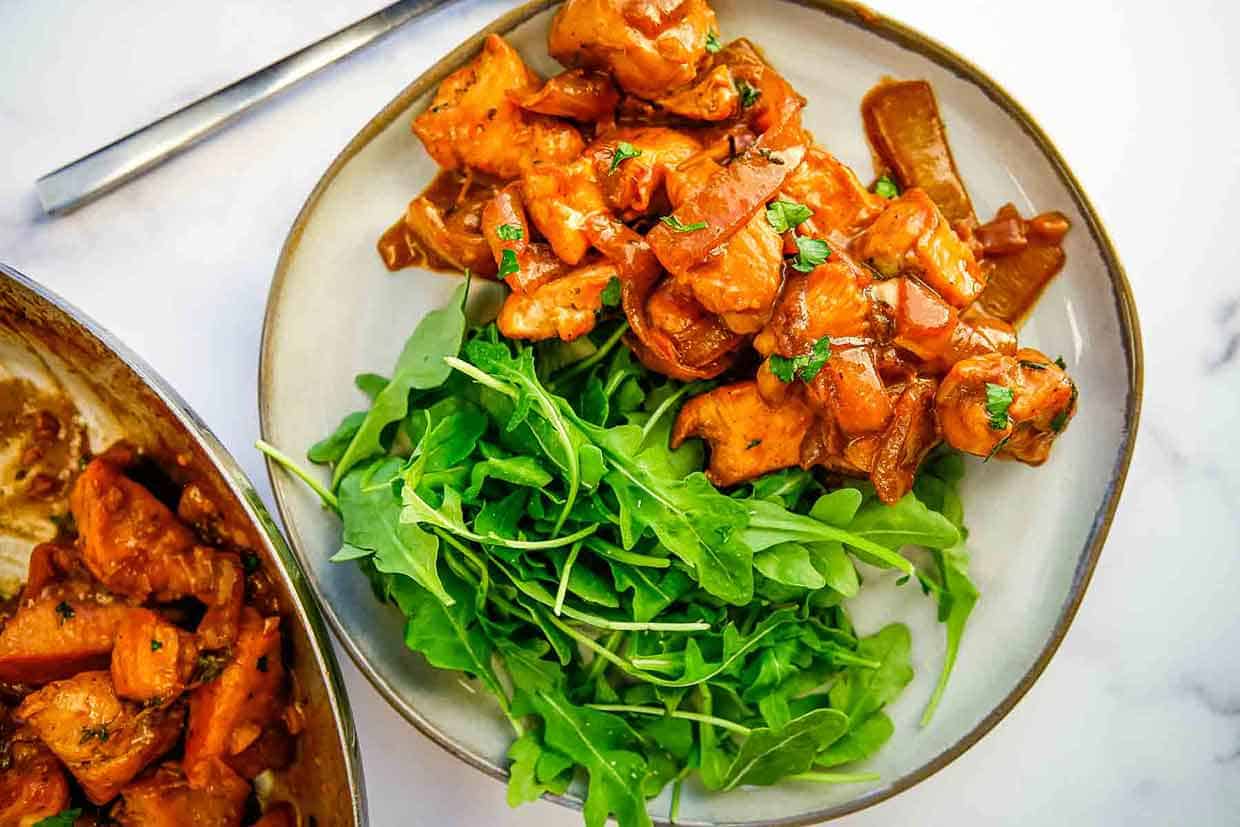In the world of basic food science, caramelization possesses the sweetest magic. This article will embark on a journey to demystify the science of caramelization, exploring what it is, how it occurs and how you can harness its power to elevate your home cooking.

The golden transformation
Caramelization, in its simplest terms, is the process that turns ordinary sugars into a golden, rich and indulgent substance. It occurs when sugar molecules are exposed to heat, causing them to break down and rearrange into a complex network of aromatic compounds. The result is a symphony of flavors that can range from nutty and toasty to deep and complex, depending on the intensity of the caramelization.
The science of caramelization
At its core, caramelization is the food science behind a series of chemical reactions that involve applying heat to sugars to the point of decomposition. As sugar is heated, it goes through various stages and levels of intensity, developing distinct flavors and colors. Initially, the sugar granules melt, forming a syrupy liquid.
As the temperature rises, the water within the sugar evaporates, causing the sugars to become more concentrated, intensifying the flavor and darkening the color. The longer it cooks, the more intense those flavors become, resulting in a rich brown color.
The Maillard reaction
Caramelization and the Maillard reaction are not the same, although the terms are often used interchangeably. While both relate to the chemical reactions of combining sugars and heat, the Maillard reaction also requires the presence of amino acids, typically found in proteins. The Maillard reaction is responsible for the browning and flavor development in foods containing both sugars and amino acids, such as when searing a steak or toasting bread.

FDL’S 75 Best Bites

Our cookbook with 75 tasty recipes will be your go-to kitchen companion for easy dinners with ad-free recipes right at your fingertips. Crafted by experienced chefs and recipe developers, this collection offers a treasure trove of tried-and-true dishes that make mealtime a breeze.
Get the Recipe: FDL’S 75 Best Bites
Caramelization in the home kitchen
While caramelization deals with sugars, it is a versatile technique that finds its place in both savory and sweet dishes. These sugars can be naturally occurring or added sugars, and when caramelized, they lend a touch of depth and complexity to a dish. Here are a few ways you can utilize this transformative process in your kitchen:
- Desserts: From luscious caramel and butterscotch sauces to the delicate golden crust atop a crème brûlée, caramelization adds an irresistible depth of flavor and visually stunning appeal to your desserts.
- Glazes and sauces: Combining sugar with savory ingredients like soy sauce, vinegar or citrus creates glazes and sauces that elevate the flavors of roasted meats or sauteed chicken and vegetables.
- Roasting vegetables: When roasted at a high temperature, vegetables like carrots, onions or sweet potatoes develop a caramelized exterior, bringing out their natural sugars and enhancing their flavor profiles.
- Sautéing: Sautéing ingredients like onions or garlic in a hot pan with oil caramelizes their natural sugars, creating a flavorful base for soups, stews and sauces.
“As you caramelize onions, for example, their natural sugars create sweetness and release savory, rich flavors. The resulting golden-brown, melt-in-your-mouth onions add a depth of flavor to dishes such as French onion soup, burgers, or caramelized onion tarts.”
— Michelle Price, Honest and Truly
Mastering caramelization
To achieve perfect caramelization, here are a few essential tips to keep in mind:
- Watch the heat: When caramelizing on the stove top, begin with medium heat to allow the sugars to melt, gradually increasing the temperature as needed. When oven roasting, high heat is necessary to achieve the desired results.
- Use your eyes and nose: Watch the color deepen, and be aware of how it smells as it cooks. You’ll often smell something burning before you see it in the pan. Be ready to remove the pan from heat once you reach the desired level of caramelization.
- Keep it moving: Stir occasionally to prevent hot spots and encourage even browning. This applies to making classic caramel, sauteeing onions or roasting carrots in the oven.

Embrace the magic
Caramelization is a fascinating process that adds depth, complexity and a touch of magic to culinary endeavors. From the golden crust on crème brûlée to the mouthwatering aromas of a perfectly caramelized onion, this sweet science has the power to transform ordinary ingredients into extraordinary creations.
Embrace caramelization in your home kitchen, experiment with different flavors and let the alchemy of heat and sugar take your cooking to new heights.
Renee N Gardner is the creative mastermind behind Renee Nicole’s Kitchen, a recipe blog based on seasonal ingredients, dedicated to helping home cooks build their kitchen confidence to become home chefs. When Renee isn’t writing, developing recipes or photographing food, you’ll find her in the garden, traveling or enjoying the outdoors with her husband, son and two dogs.